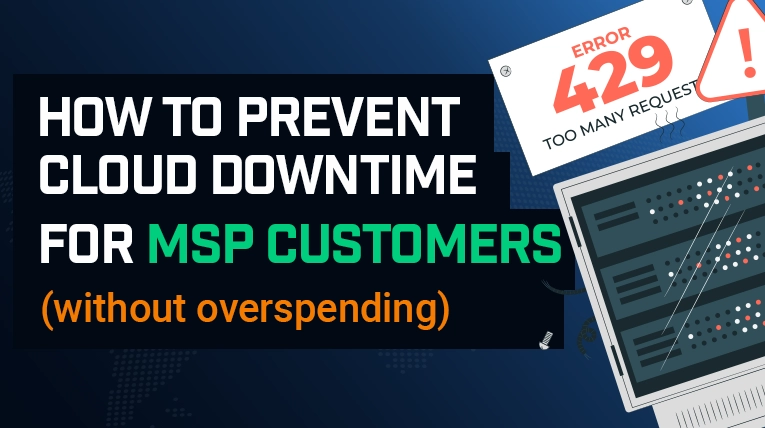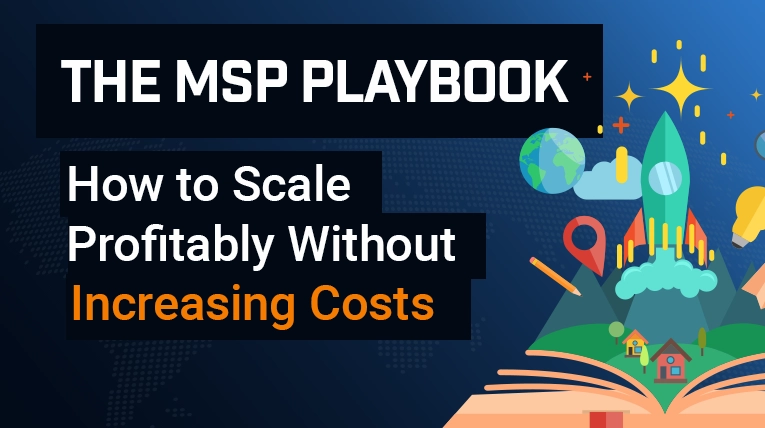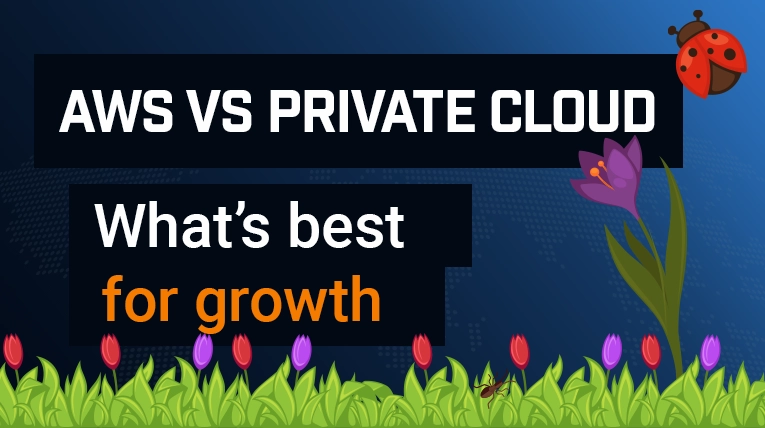How to prevent cloud downtime for MSP customers (without overspending)
Last Updated: June 25th, 2025 6 min read Servers Australia

If you’ve been in the MSP space long enough, you’ve had this moment: everything’s technically fine – backups are working, failover’s in place – yet downtime hits, and the client’s still furious.
Not because their data was lost, but because recovery was slow, expectations weren’t clear, and no one could answer the question, “How long until we’re back?”
That’s the gap most MSPs fall into. Not because they’re careless, but because the industry default is to throw more infrastructure at the problem. HA everywhere. Replication across the board. Backups running every 15 minutes for everything – just in case.
But here’s the truth: more infrastructure doesn’t mean more uptime. It often means more cost, more noise, and more pressure on your team to manage complexity that shouldn’t exist in the first place.
Not every workload needs to be untouchable
There’s a huge difference between a test VM and a production billing gateway. But if you look at how most MSPs apply protection, you wouldn’t know it. Everything gets wrapped in the same high-availability, always-on, fully-redundant strategy.
And that’s how you blow your margin without improving your SLA.
The better move? Triage. Understand what matters, what doesn’t, and where you can dial back without increasing risk. That’s where a Business Impact Analysis becomes your best friend. It turns guesswork into strategy. And it gives you the license to say, “No, this doesn’t need failover – it just needs a fast restore.”
Resilience keeps you online. Recovery brings you back.
They’re not interchangeable.
Resilience is what keeps services running when something breaks. Load balancers. Clustering. Redundant power. Environments that detect a problem and reroute before anyone notices. Think of it as your platform's immune system – rerouting, absorbing, recovering in real time.
But it has limits. Because one day, something will break in a way that resilience can't catch. Human error. A critical bug. A cyberattack that slips past defences.
That’s when disaster recovery steps in.
Backups aren’t enough. You need confidence in how quickly you can restore, how recent the data will be, and whether the process has actually been tested. DR isn’t your safety net – it’s your comeback plan.
Stop trying to protect everything equally
Want a fast way to reduce cost and complexity? Stop applying premium protection to workloads that don’t need it.
Not every system needs to be live all the time. Some just need to be recoverable within a few hours. Others can wait until morning. That difference is where your margins live.
A smarter model splits protection by risk. For example:
Tier 1 – Critical systems (e.g. billing, clinical data): Resilience + disaster recovery, with defined RTOs
Tier 2 – Core business tools (e.g. CRM, email): Either HA or rapid backup, depending on usage
Tier 3 – Non-essentials (e.g. dev/test): Backup only, with clear recovery windows
This isn’t just a technical strategy. It’s margin protection in disguise.
Infrastructure should fix itself
If your engineers are waking up to restart services, something’s broken – and it’s not just the system.
Manual recovery burns time, drags down morale, and chips away at profitability. And the more clients you onboard, the worse it gets – unless your infrastructure can handle failure on its own.
Smart MSPs design for self-healing from day one. That means:
Using orchestration tools to restart failed services automatically
Building in health checks and remediation scripts as part of your platform baseline
Deploying virtualisation platforms that support automated failover and rollback
Using DNS-level failover for web apps or SaaS products prone to external issues
These aren’t extras. They’re the foundation of scalable service delivery. The more issues your platform can resolve without a human in the loop, the more responsive – and profitable – your MSP becomes.
The right alerts should reduce noise
More alerts don’t mean more control. They just mean more distractions – and more opportunity for critical issues to get buried under low-priority noise.
Effective monitoring isn’t about flooding your team with metrics. It’s about surfacing the right signals, at the right time, with the right urgency. That means setting thresholds based on service impact, not just technical behaviour. It means escalating the right way – treating a failed login attempt differently to a system-wide outage. And where possible, it means spotting patterns early, using predictive analytics to catch performance issues before they snowball.
If your team spends more time triaging alerts than solving problems, something’s off. Monitoring should simplify decision-making, not complicate it.
Your vendors shouldn’t create downtime risk
Every minute your team spends waiting on a vendor callback is time you can’t bill – and trust you can’t afford to lose.
Your infrastructure partner should reduce complexity, not add to it. That means:
Australian-based engineers who answer the phone 24/7, without scripts or deflection
Proven SLAs – and escalation paths that don’t vanish when things get hard
Platforms designed for MSP use: multi-tenant support, white-label readiness, and seamless integration into your tooling
When your provider can’t keep up, your client doesn’t care who’s technically at fault. They see one brand: yours. So partner with vendors who treat your uptime as their responsibility – not your burden.
Teach clients to choose their own risk
Most clients default to “zero downtime” because they don’t know what it costs. Or what it even means.
That’s your opportunity to lead. Give them clear, side-by-side options – and let them choose:
Low risk, high continuity: Instant failover, frequent backups, near-zero RTO
Balanced: Daily backups, recovery within a few hours, some resilience built in
Cost-conscious: Backup only, recovery within a defined window
It’s not a sales tactic. It’s risk alignment. And when things break – because eventually, they will – those conversations are what protect the relationship.
Final word: Smart uptime is designed, not bought
You can’t eliminate risk. But you can manage it well.
Smart MSPs don’t try to build indestructible infrastructure. They build smart protection around what matters. They automate the rest. And they choose vendors who help them deliver with confidence.
The result? Less downtime. Less overspend. And fewer surprises.
[Talk to our team about making your uptime strategy work harder – without costing more]



